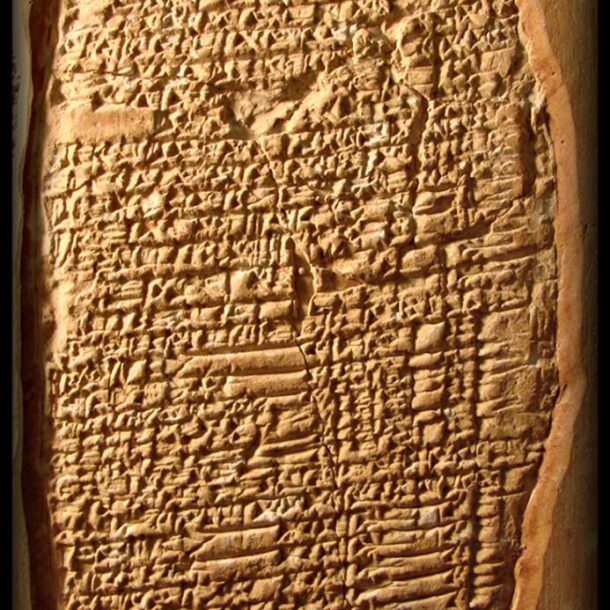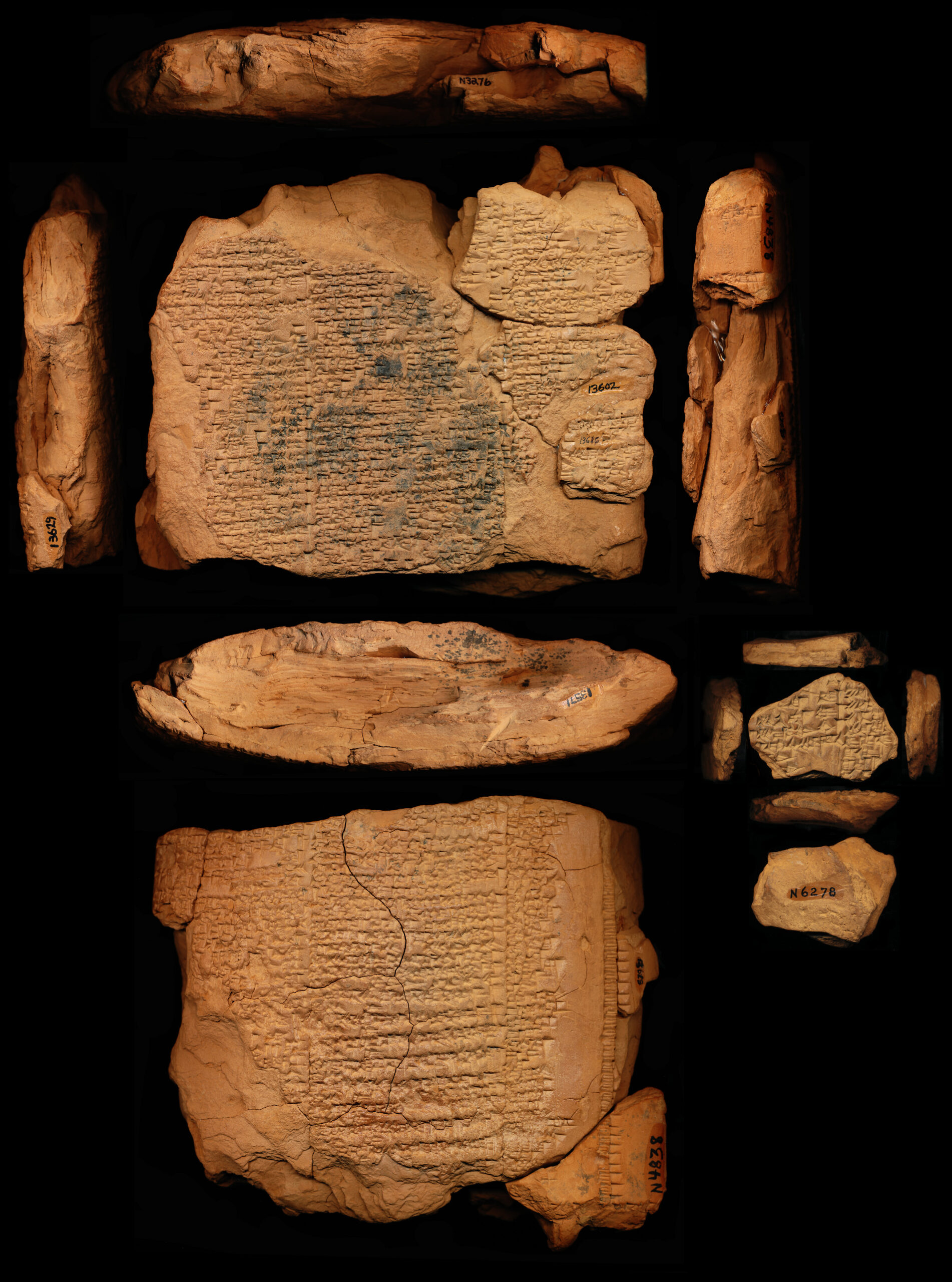Another week is coming to a close. Fermentation has been a blast. We’ve learned about overcoming a lack of yeast, overcoming disgust, the duality of salt as both preserver and destroyer, and the unexpected sexiness of milk. We’ve taken a dive into the discovery/transliteration/translation continuum, and fallen hard for Inanna. It’s been a busy week, so I think we’ve all earned a cup of wine this Monday morning.
On to today’s tablet. It’s now in the National Museum of Scotland in Edinburgh, but comes from the Old Babylonian period. It is a divine journey story, like Inanna’s journey to from Ur to Eridug and back again. This journey was undertaken by Nanna (whom we met on day 3) to Nippur, with the goal of gaining an abundance of life – flourishing orchards, plentiful herds of wild animals – from Enlil (day 13) to take back to Ur.
He asks of Enlil: “In the palm-grove and vineyard give me honey and wine” (it’s not totally clear whether date syrup was called honey, or beehives were kept among the date palms).
It’s significant that Nanna travels north to Nippur. Wine was more common in the north, where vines grew wild, while beer was the drink of the south where the cereals were grown in great quantities. Some estimate that up to 40% of the cereals grown there were destined for fermentation.
Wine was a prized drink in the ancient world. Homer’s “wine-dark sea” is a famous epithet used in both the Odyssey and the Iliad, and was studied extensively by the British chancellor (two times) and prime minister (for four non-consecutive terms), William Gladstone. In between his stints as chancellor, Gladstone found that the colour blue was almost entirely absent from the works of Homer, barring a single mention of Zeus’s eyebrows, suggesting it meant something a little different from what we think of as blue today. Or that Zeus was big on makeup Pinterest. It’s an interesting tidbit that a name for the colour blue is generally the last one to arise in a culture. For a long time, cultures bundle it together with green. Almost unbelievably, according to a Wired article from 2012, in Japan this separation was still underway after WWII, when the USA sent teachers with packets of Crayola crayons and needed to distinguish the colours.
If Homer was in fact a real person, he probably lived in the 8th century BC, when the Neo-Assyrian Empire had swallowed up Mesopotamia and begun eying up the empire of Egypt for the next course. Egypt was an empire enamoured by wine. They believed that vines sprung up at the sites of ancient battles, sprouting where blood had been spilled, and that the blood was delivered back from the ground as grape juice. For this reason, when it had been suitably fermented, the wine would arouse the same powerful emotions as felt by their warrior forebears.
Next week, we turn to the sounds encoded in cuneiform. How do we know how these dead languages were pronounced? How would the world have sounded in those far-off times? Prick up your ears!

